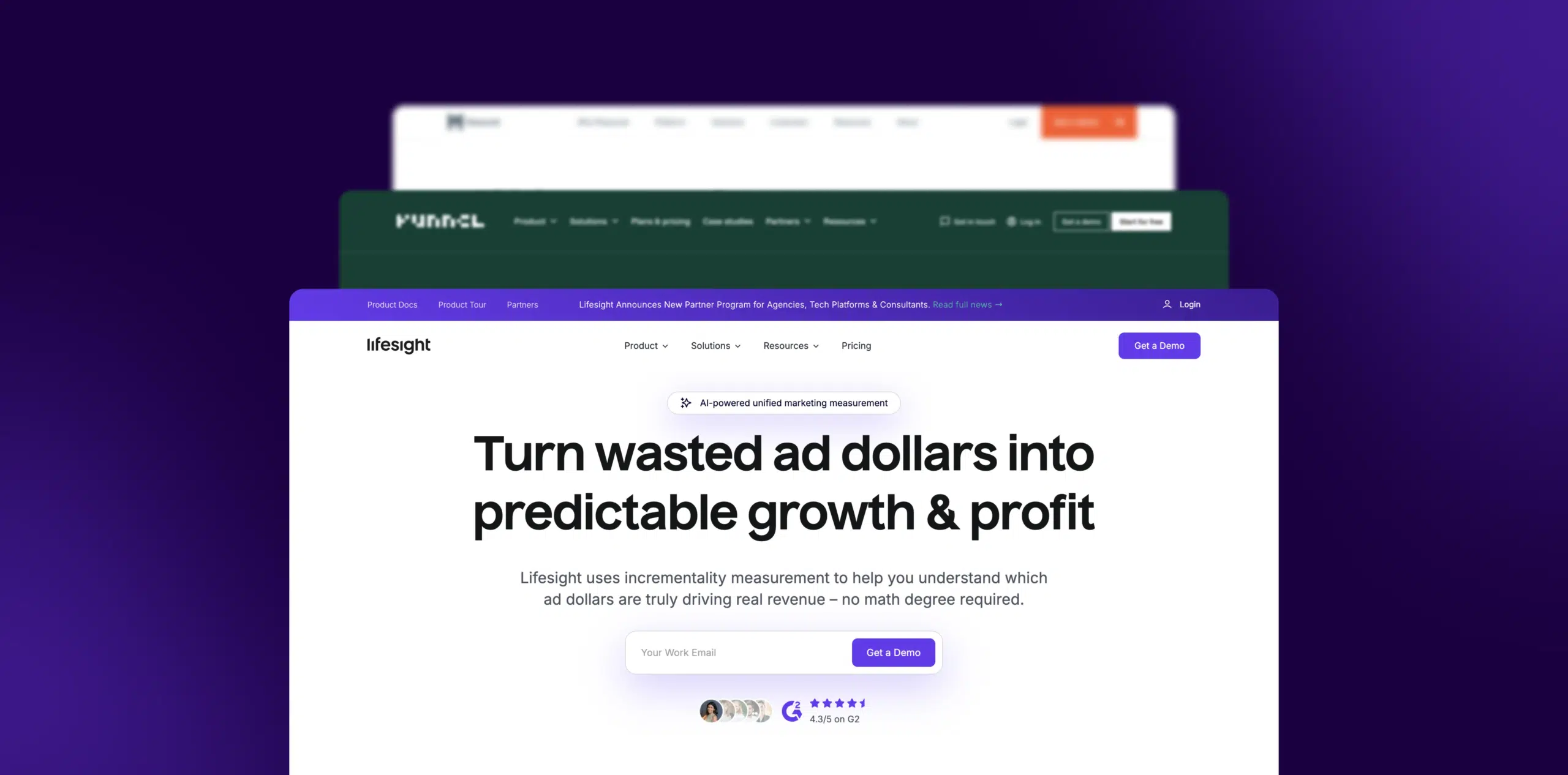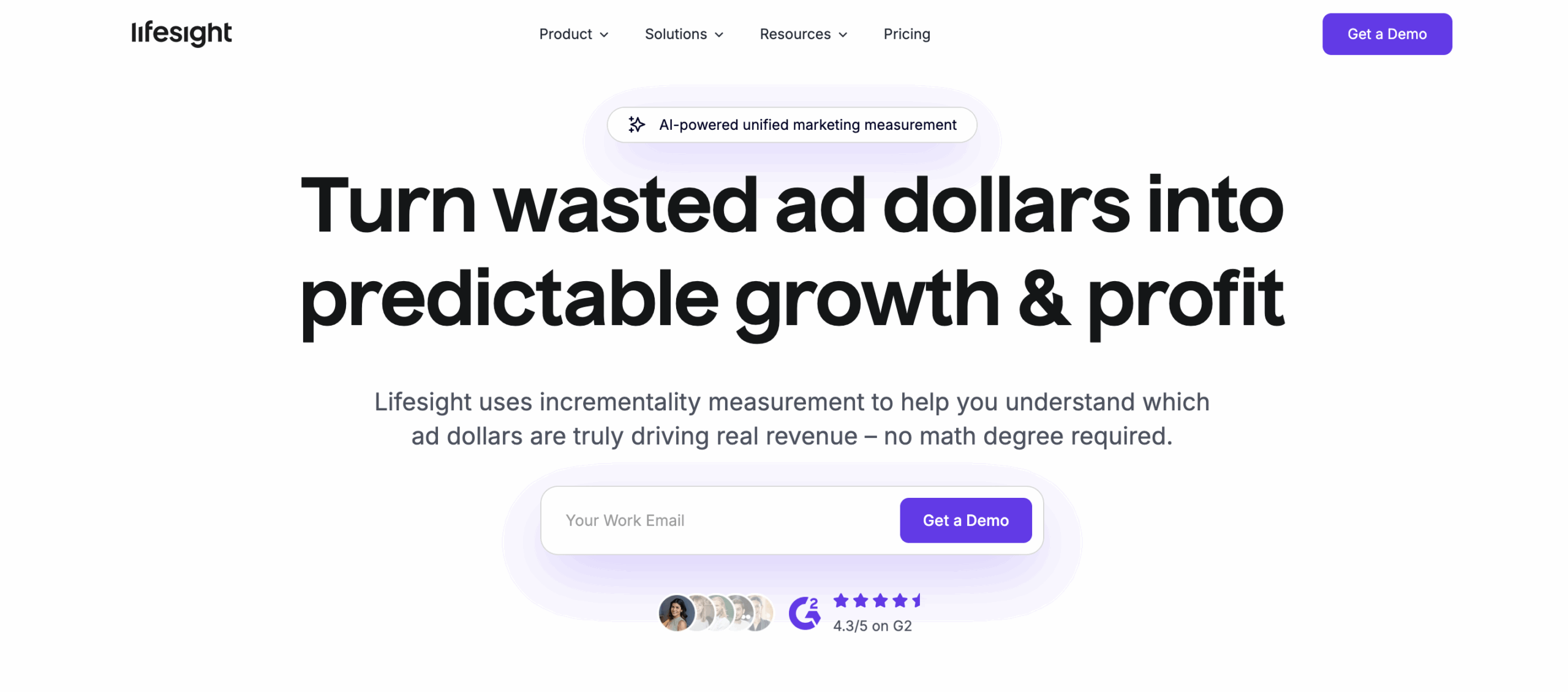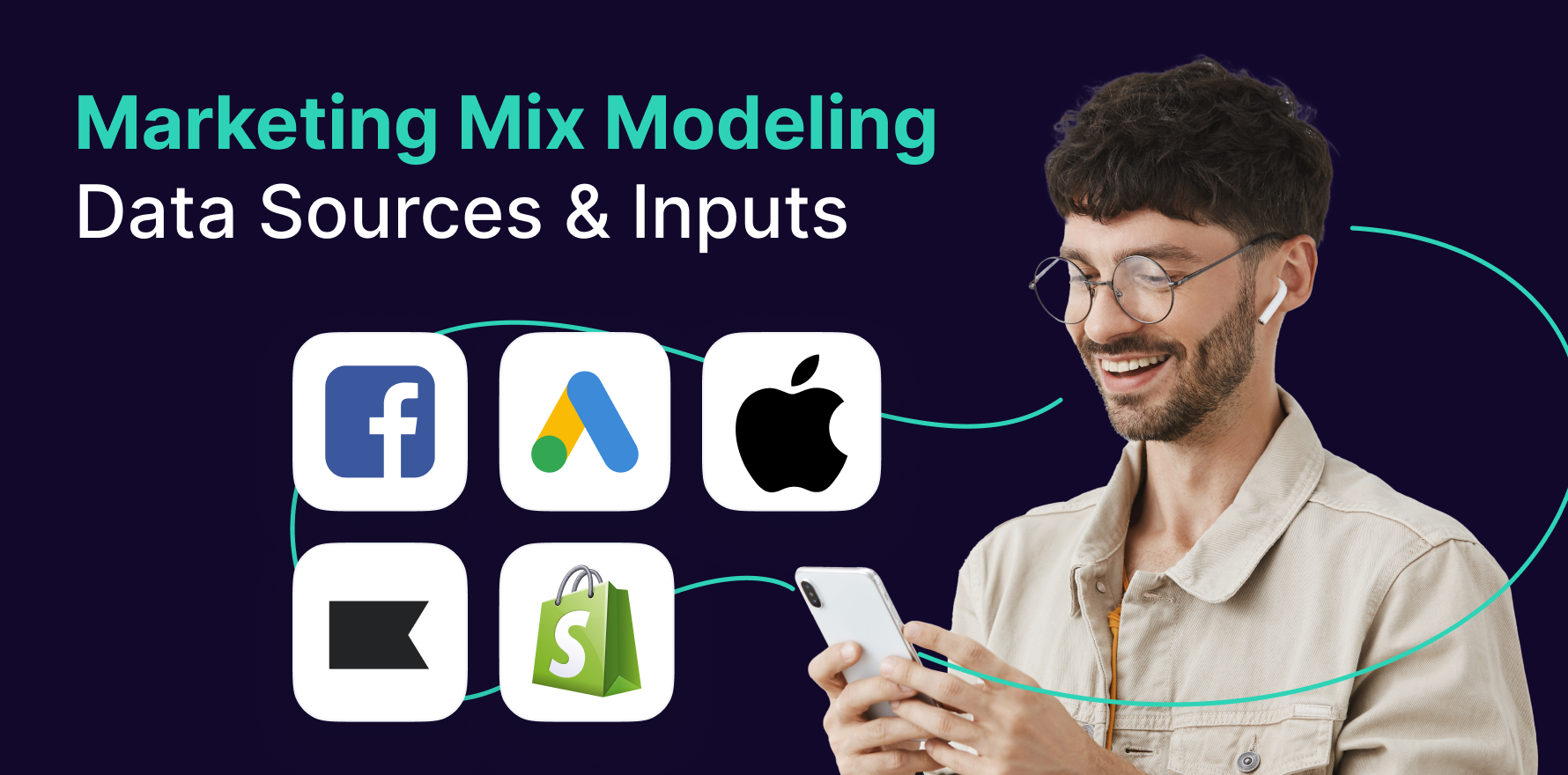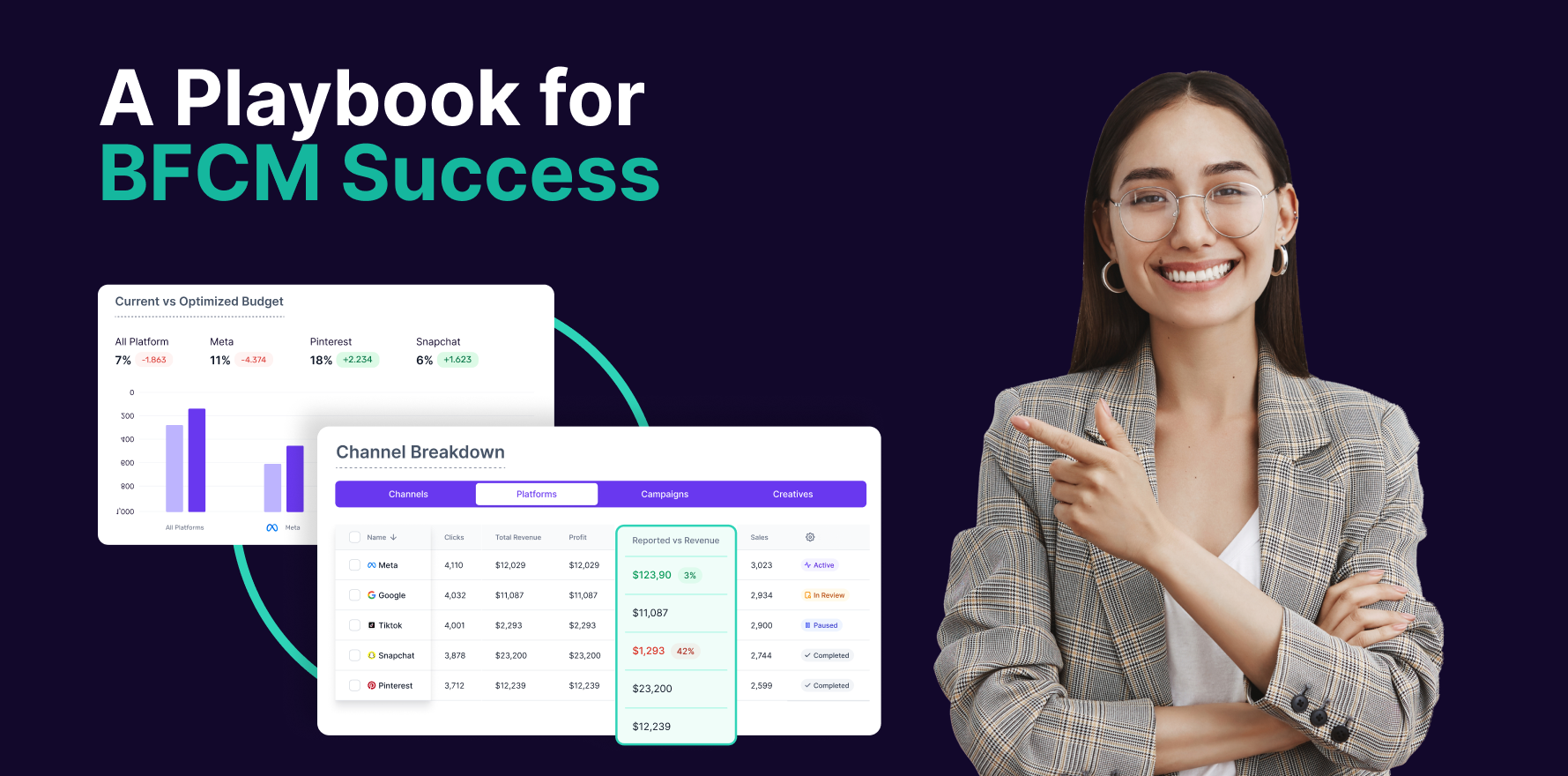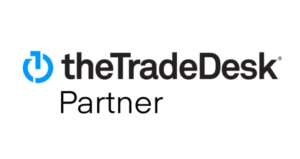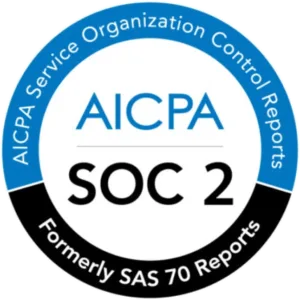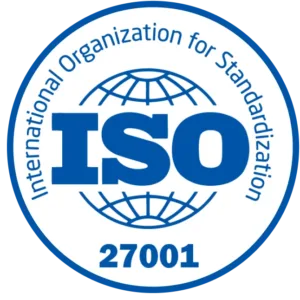According to Gartner, one of the top investment priorities for brand and agency marketers this year is measurement and analytics, with a specific focus on full-funnel performance measurement and budget optimization. In this context, Marketing Mix Modeling (MMM) has emerged as an essential methodology. It empowers marketers to quantify the impact of various channels -TV, digital, OOH, and more – on sales and brand performance. More importantly, MMM enables scenario planning, supports strategic forecasting, and provides a solid foundation for long-term budget reallocation decisions.
With growing constraints on user-level data and the decline of cookie-based tracking, MMM’s aggregated, privacy-safe approach has gained even more traction. It offers the ability to analyze adstock effects, saturation, and time-lagged impact – factors critical for understanding marketing’s true contribution. Yet, while MMM excels at capturing macro trends and guiding strategic decisions, it has its limitations.
One of the most pressing gaps in MMM is its inability to accurately infer incrementality. Incrementality refers to the causal impact of a marketing activity – what actually drives a lift in business metrics, not just what appears correlated. Google, Meta, and TikTok have all been vocal advocates of incrementality testing, promoting controlled experiments such as geo-lift to validate campaign effectiveness. As these platforms stress, understanding incrementality is crucial to avoid misleading correlations and truly optimize spend.
This is why leading marketers are now moving beyond a single-measurement mindset. As outlined in the Unified Measurement Framework, MMM should be seen not as a standalone solution but as one part of a broader orchestration. By integrating MMM with experimentation and causal attribution methods, brands can gain a more holistic, accurate, and actionable view of performance.
In this article, we’ll explore the top MMM software tools in 2025 – platforms that not only offer robust modeling capabilities but also integrate incrementality testing, forecasting, and incrementality-calibrated attribution models to support every level of marketing decision-making.
What should you look for in a Marketing Mix Modeling Tool?
Selecting the right Marketing Mix Modeling (MMM) software in 2025 goes beyond just choosing a statistical engine. It requires a comprehensive solution that not only measures performance but also empowers marketers to make strategic, tactical, and operational decisions with confidence. As marketing teams navigate fragmented customer journeys, cross-channel investments, and growing privacy concerns, the capabilities of your MMM tool can directly influence business outcomes.
Here are the essential features to prioritize:
1. Comprehensive Data Integration
An effective MMM platform should seamlessly consolidate data across all relevant marketing and business channels – online, offline, paid, owned, and earned. This includes CRM systems, media spend, sales data, and external variables like seasonality or economic trends. A robust data pipeline ensures the model reflects the complete marketing environment, reducing blind spots and improving reliability.
2. Predictive Analytics and Scenario Planning
MMM’s true strength lies in its ability to guide future decisions. Look for software that enables you to simulate multiple scenarios – such as shifting budgets between platforms or adjusting spend levels – and forecast the likely outcomes. These capabilities allow marketers to anticipate performance, manage risk, and optimize for business goals ahead of time.
3. Incrementality Testing Integration
While MMM is powerful for strategic allocation, it often falls short on answering “what really caused the change?” That’s where incrementality testing comes in. Tools that integrate with geo-lift, split tests, or time-based experiments help calibrate MMM models with real-world, causal insights. This triangulation boosts accuracy and ensures that optimization decisions are based on truly incremental returns – not just historical correlations.
4. Scalability and Customization
As marketing operations become more complex, your MMM solution should scale with your business needs. From small regional campaigns to global brand initiatives, the tool must accommodate varying data granularity and business structures. Moreover, it should offer flexibility to customize model inputs, constraints, and output formats aligned with your unique KPIs and decision workflows.
By focusing on these core capabilities, marketers can ensure their MMM investment delivers strategic clarity, operational agility, and measurable growth impact in a rapidly evolving ecosystem.
TOP 10 Marketing Mix Modeling (MMM) Software Providers in 2025
TOP MMM Provider |
Methodologies |
Ideal For |
| Lifesight | MMM + Incrementality testing + Attribution | Mid-to-large DTC & Ecommerce brands |
| LiftLab | MMM + Experimentation | Early stage fast-moving growth teams |
| Measured | MMM + MTA hybrid | Omnichannel advertisers |
| Sellforte | MMM + Geo testing + Attribution analytics | Retail, eCommerce and DTC brands |
| Recast | Causal MMM (Bayesian) | Analytics-heavy organizations |
| WorkMagic | MMM + Automation | DTC and e-commerce brands |
| Cassandra | Self-serve MMM | Agencies and SMBs |
| Rockerbox | MMM + MTA | Mid-market digital brands |
| Prescient AI | AI-driven MMM | Retail and digital marketers |
| Fospha | MMM + Platform Attribution | Performance media teams |
Best Marketing Mix Modeling (MMM) Software in 2025
1. Lifesight Marketing Mix Modeling Software
Lifesight is a unified marketing measurement and analytics platform designed to help brands make smarter, data-driven marketing decisions. It combines Marketing Mix Modeling (MMM), incrementality testing, and causal attribution into a single platform, enabling marketers to measure performance, optimize spend, and forecast outcomes across all channels. Lifesight stands out by emphasizing triangulation – blending econometrics, experimentation, and attribution into a cohesive decision-making framework.
Lifesight MMM Best For
Mid-to-large scale E-commerce, DTC, retail, and digital-first brands with annual revenues between $30 – $1000M and media spends over $5M. Ideal for businesses looking to move beyond siloed attribution and toward truly incremental, causally validated measurement.
Lifesight MMM Features
- Automated MMM models that are refreshed regularly with new data
- Calibrated using real-world geo-lift and incrementality tests
- Privacy-safe, aggregated data approach-no need for user-level tracking
- Strategic scenario planning and budget optimization capabilities
- Real-time triangulation with attribution and experimentation results
- Intuitive, configurable dashboards for strategic and operational use
Lifesight MMM Unique Features
While the marketing measurement landscape is crowded with vendors offering isolated tools for attribution, mix modeling, or experimentation, Lifesight’s uniqueness lies in its truly unified approach to causal measurement. Rather than offering siloed insights or static dashboards, Lifesight operationalizes incrementality, turning complex data into real-time, board-level decisions that drive growth with confidence.
Here’s what sets Lifesight apart:
- Unified Causal Measurementstack that combines MMM, incrementality testing, and attribution into a single unified causal measurement platform.
- Continuously calibrates MMM models using live geo-lift test results for higher accuracy.
- Delivers value fast, with a 7-day audit and actionable insights within the first 30 days.
- 24/7 support with a dedicated customer success manager and a world class marketing science team
- Aligns marketing, finance, and agencies around a shared set of causal KPIs.
Lifesight MMM Pros and Cons
Pros:
- One of the only platforms offering true causal triangulation – MMM, incrementality, and attribution in sync
- Designed for fast deployment: audits in 7 days, first optimizations by day 30
- Independent and privacy-safe; zero reliance on cookies or third-party identity graphs
- Trusted by CMOs and CFOs alike, with forecasts that hold up to board scrutiny
Cons:
- Requires organizational alignment around test design and data feeds to fully utilize its capabilities
Lifesight MMM Reviews
“As a DTC brand with complex omnichannel marketing, we always struggled to know how out CTV ads were impacting digital conversions. But not anymore…” – Marketing Director, DTC footwear brand
“With seasonal fluctuations and increasing competition, we needed to maximize every marketing dollar. Lifesight gave us the insights to confidently shift spend between digital and traditional channels.” – Brand Strategy Manager, Retail Chain
Lifesight MMM Pricing
Lifesight’s starter plan for mid-size brands starts from $5000/month. For large businesses looking to streamline their measurement workflow and program, Lifesight offers a custom pricing model based on business size and data complexity. Brands can get started with a 30-day free audit, and there’s a 20% discount on annual contracts.
2. Liftlab
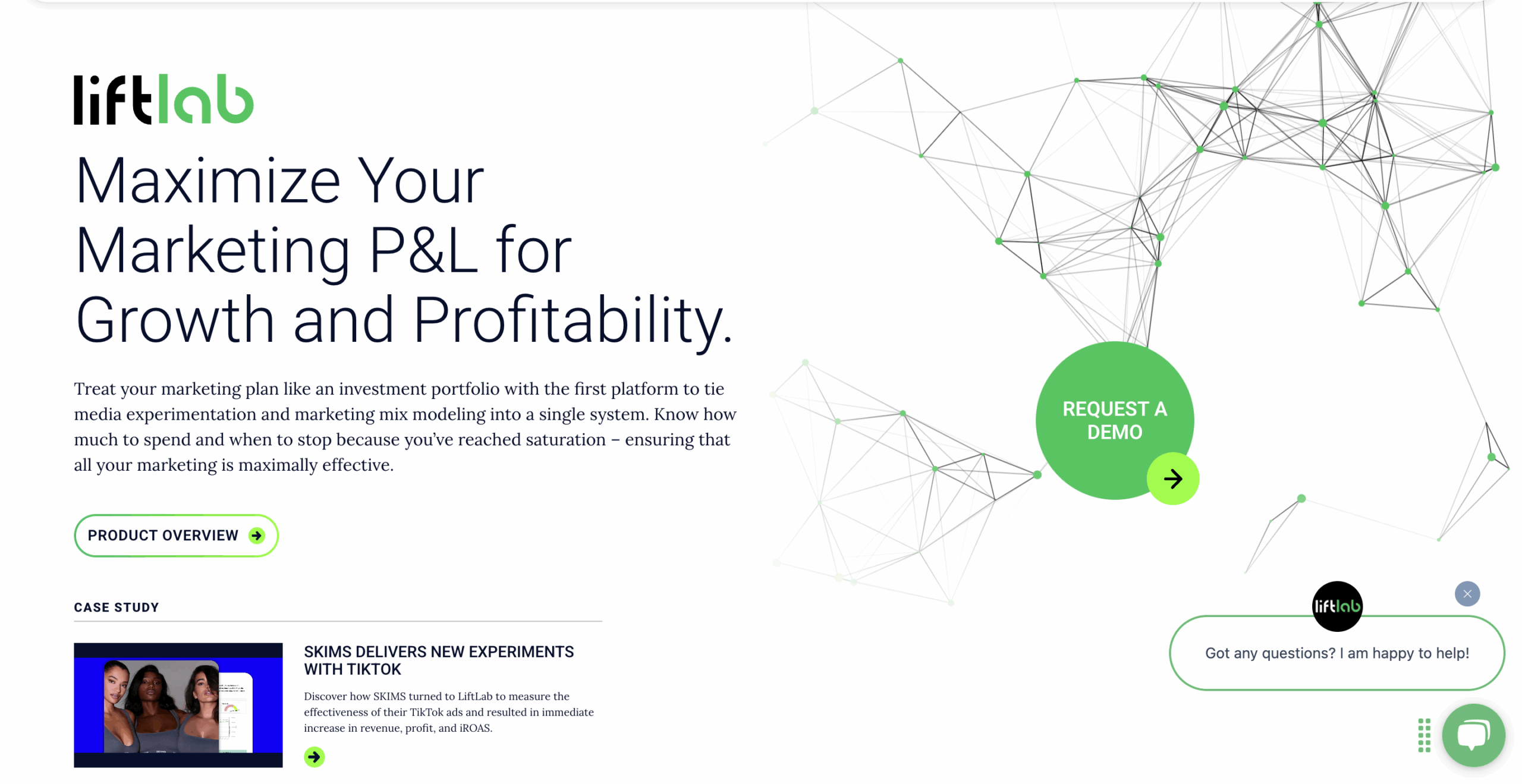
LiftLab is a marketing analytics platform that integrates agile Marketing Mix Modeling (MMM), media experimentation, and forecasting into a unified system. Designed to optimize marketing spend and revenue forecasting, LiftLab provides real-time insights to help marketers make data-driven decisions. The platform emphasizes the “Science of Marketing Effectiveness,” connecting marketing investments to growth and profitability objectives.
MMM Best For:
LiftLab is ideal for B2C brands across retail, CPG, digital services, and other industries that manage significant media spending across multiple channels. It’s particularly suited for organizations seeking to unify their marketing measurement approaches and make informed, agile decisions based on real-time data.
MMM Features:
- Agile Marketing Mix Model: Analyzes marketing effectiveness and optimizes campaign performance across various channels and tactics.
- Media Experimentation: Integrates geo-testing and other experimentation methods to assess the incremental impact of marketing activities.
- Forecasting Insights Dashboard: Provides weekly updates to help marketers budget, plan, and optimize their strategies in real-time.
- Data Integration: Onboards and manages data connections, ensuring regular tracking and analysis.
Pros & Cons:
Pros:
- Combines MMM, experimentation, and forecasting in a single platform.
- Provides real-time, actionable insights for agile decision-making.
- Emphasizes transparency and empirical data through integrated experimentation.
Cons:
- Pricing details are not publicly disclosed; interested parties need to contact LiftLab directly for information.
The platform may require a learning curve for teams new to integrated MMM and experimentation approaches.
Pricing:
LiftLab does not publicly disclose its pricing structure. Organizations interested in the platform are encouraged to contact LiftLab directly to obtain customized pricing information based on their specific needs and scale.
3. Measured MMM
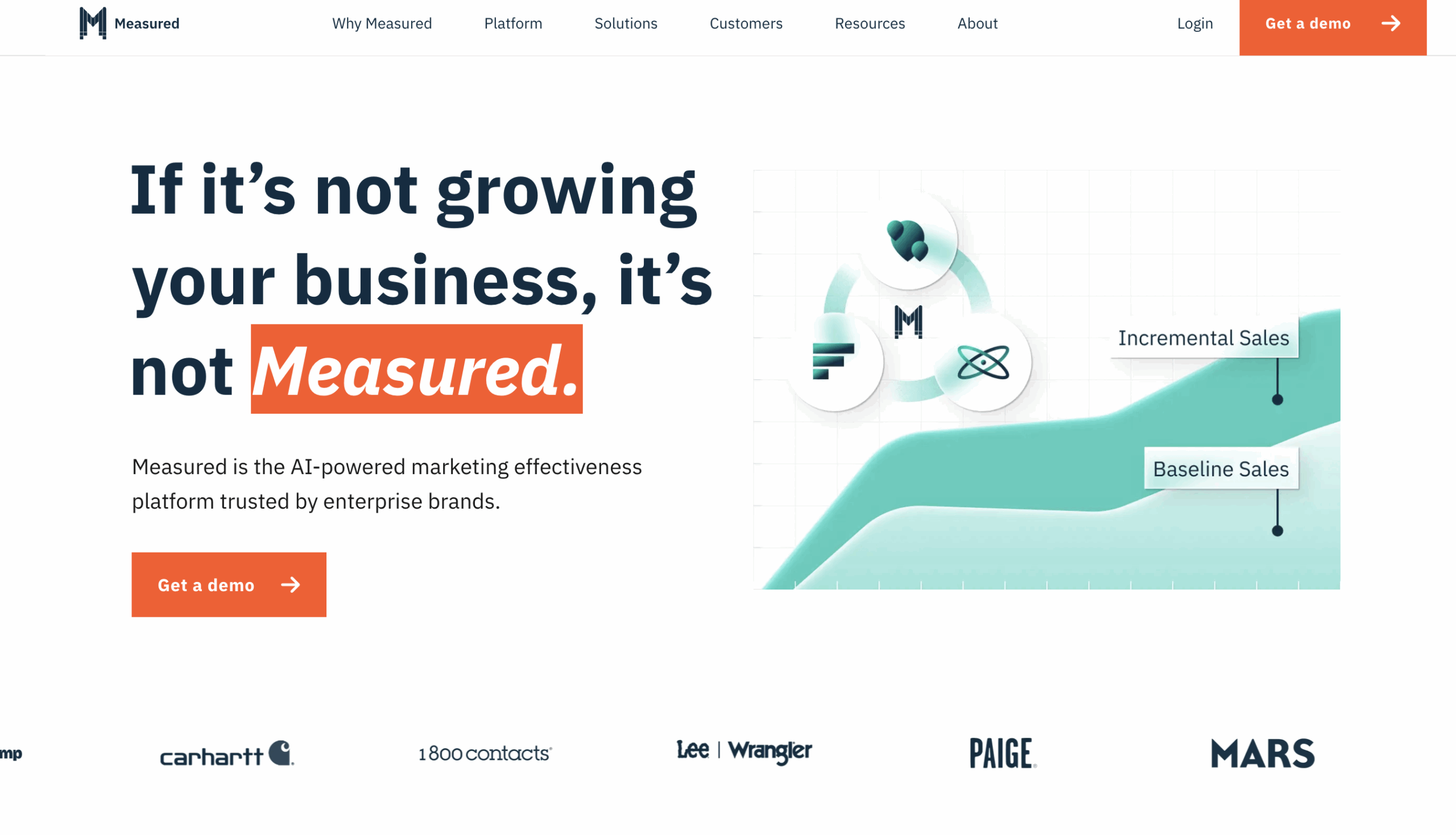
Measured is a marketing measurement platform that specializes in combining MMM with incrementality testing and attribution data to offer a clearer view of media performance. It is designed for brands looking to understand the true impact of their advertising investments through a portfolio-based view of incrementality. However, unlike Lifesight, Measured’s approach often relies on stitched-together modules, which can result in fragmented insights and slower actionability.
MMM Best For:
Measured is best suited for mid-sized to large omnichannel brands that have the resources to support separate workflows for MMM and experimentation. It’s a good fit for teams already running multiple media channels and looking for higher-level incrementality insights, albeit with less automation and orchestration compared to Lifesight.
MMM Features:
- Supports MMM with regular data refreshes and integrations
- Uses platform-level and custom incrementality experiments to inform media impact
- Offers scenario modeling for budget planning
- Maintains data transparency through third-party integrations
- Focuses on channel-level insights across paid digital channels
Pros & Cons:
Pros:
- Strong track record in incrementality-led measurement
- Provides access to both platform experiments and MMM views
- Offers transparency in media performance by using advertiser-owned data
Cons:
- Lacks the tight integration and automatic calibration of geo-lift and MMM seen in Lifesight
- Recommendations often remain static dashboards vs. action-ready tools
- No native optimization or platform execution; teams still rely on manual activation
Pricing:
Measured doesn’t publicly list its pricing; brands must engage in discovery to get a quote. Given its enterprise positioning, it may be more cost-intensive for smaller teams, without the rapid deployment and early ROI offered by Lifesight’s 30-day audit model.
04. Sellforte
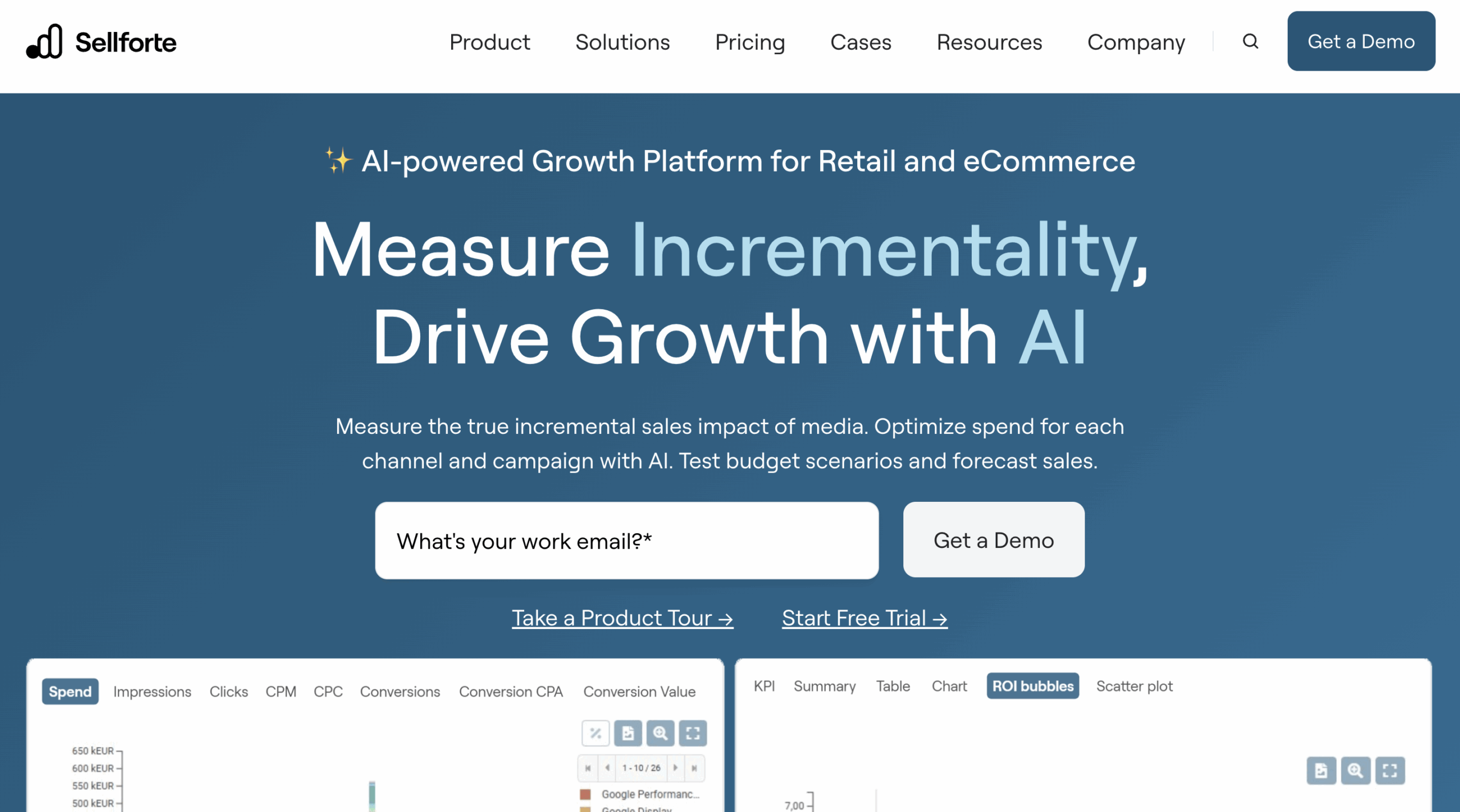
Sellforte Marketing Mix Modeling
Sellforte is a next-generation Marketing Mix Modeling (MMM) platform tailored for eCommerce, Direct-to-Consumer (DTC), and retail brands. It leverages causal MMM methodologies, combining Bayesian modeling with calibration from incrementality tests and attribution data to provide accurate and actionable insights. The platform is designed to help marketers measure the true incremental impact of each channel and campaign, enabling data-driven decisions for budget allocation and optimization.
MMM Best For:
Sellforte is ideal for eCommerce, DTC, and retail brands seeking a comprehensive MMM solution that combines causal modeling with practical tools for campaign and budget optimization. Its integration of incrementality testing and attribution analytics makes it suitable for organizations aiming to understand the true ROI of their marketing efforts. However, for teams looking for a more integrated platform that combines MMM with real-time optimization and causal attribution, Lifesight may offer a more comprehensive solution.
MMM Features:
- Causal Marketing Mix Modeling: Utilizes Bayesian modeling calibrated with incrementality tests and attribution data to provide accurate ROI estimates.
- Geo Lift and Conversion Lift Testing: Supports planning and analysis of lift tests to validate and calibrate MMM results.
- Attribution Analytics: Enables comparison of MMM results with ad platform and Google Analytics 4 attribution data.
- Media Metrics Analysis: Analyzes impressions, clicks, conversions, and other metrics to uncover drivers of ROI changes.
- Budget Planning and Optimization: Provides tools for budget allocation, campaign planning, and scenario analysis.
Pros & Cons:
Pros:
- Combines causal MMM with incrementality testing and attribution analytics.
- Offers tools for budget planning and campaign optimization.
- Provides actionable insights through a user-friendly dashboard.
Cons:
- While Sellforte integrates attribution analytics, it’s worth noting that Multi-Touch Attribution (MTA) is considered an outdated model in the current marketing landscape.
- May require significant statistical expertise to fully leverage the platform’s capabilities.
- Lacks the tight integration and automatic calibration of geo-lift and MMM seen in Lifesight.
Pricing:
Sellforte offers tiered pricing based on business type and scope:
- Launchpad (Free): For qualifying businesses, includes digital media measurement and limited features.
- eCommerce Plan: €2,990/month for businesses with an average monthly media spend of €200,000.
- DTC Plan: €3,490/month, designed for DTC brands with similar media spend.
- Retail Plan: €3,990/month plus customizations, tailored for retailers with complex needs.
05. Recast
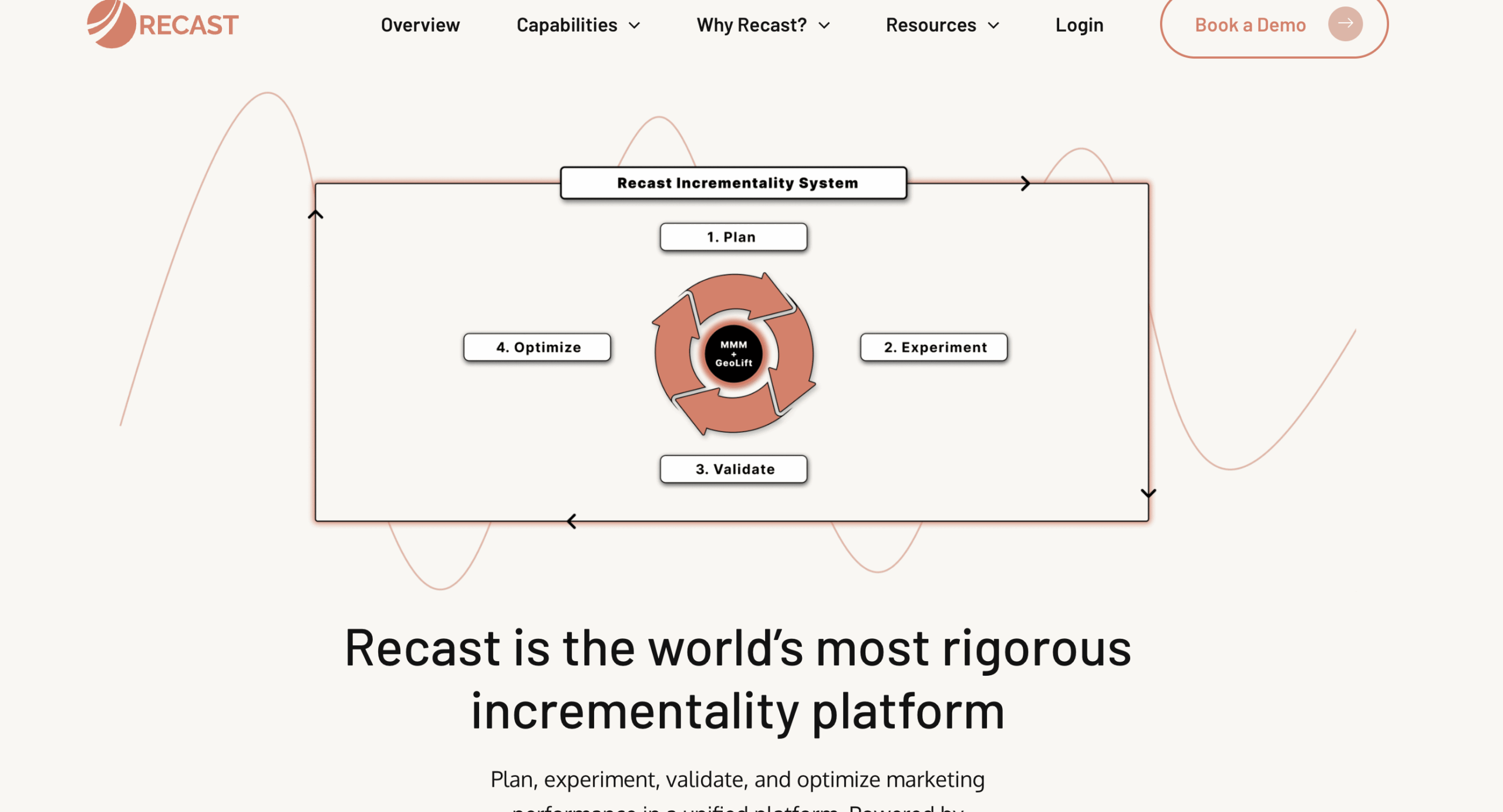
Recast is a marketing mix modeling (MMM) platform designed to provide rigorous, transparent, and statistically sound insights into marketing performance. Utilizing a fully Bayesian approach, Recast offers weekly model updates, enabling marketers to make data-driven decisions with greater confidence. The platform emphasizes transparency by openly publishing model documentation and performance metrics, ensuring users have a clear understanding of the underlying methodologies.
MMM Best For:
Recast is well-suited for data-savvy marketing teams and organizations with dedicated analytics resources. Its emphasis on statistical rigor and transparency makes it ideal for companies seeking a deep, technical understanding of their marketing mix. However, for teams looking for a more integrated, user-friendly solution that combines MMM with causal attribution and real-time optimization, Lifesight may offer a more comprehensive approach.
MMM Features:
- Bayesian Modeling: Employs a fully Bayesian statistical model powered by Hamiltonian Monte Carlo sampling, allowing for robust causal inference.
- Weekly Updates: Provides weekly model refreshes, ensuring that insights remain current and actionable.
- Transparency: Offers a “glass box” approach with openly published model documentation and performance metrics.
- Goal Tracking: Features tools like the Goal Tracker to monitor performance against set metrics and probabilities of meeting goals.
- Budget Optimization: Includes a Budget Optimizer to provide recommendations for optimal spend allocation based on specific targets.
Pros & Cons:
Pros:
- Emphasizes statistical rigor and transparency, providing users with a clear understanding of model assumptions and performance.
- Regular model updates ensure insights remain relevant in dynamic marketing environments.
- Offers tools for goal tracking and budget optimization, aiding in strategic planning.
Cons:
- May require significant statistical expertise to fully leverage the platform’s capabilities.
- Lacks native integration with ad platforms for direct activation of insights.
- Does not offer a unified solution combining MMM with causal attribution and real-time optimization, as seen in platforms like Lifesight.
Pricing:
Recast operates on a custom pricing model, with costs varying based on company size and specific needs. According to industry sources, the average annual contract value is around $35,000, with some deals reaching up to $75,000.
06. Workmagic
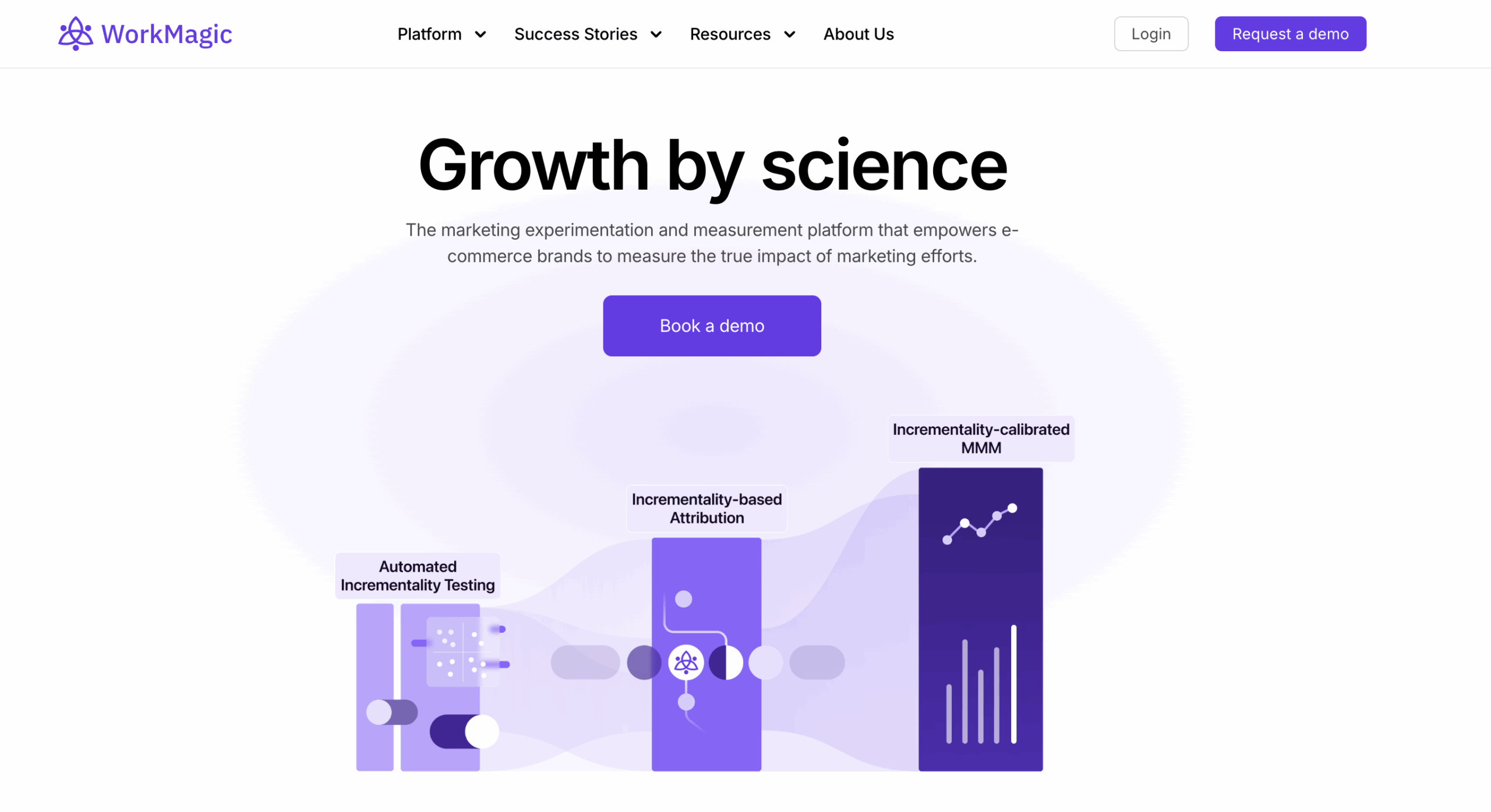
WorkMagic is a marketing measurement platform that integrates incrementality testing, Multi-Touch Attribution (MTA), and predictive Marketing Mix Modeling (MMM) to provide a comprehensive view of media performance. By calibrating attribution models with incrementality test results, WorkMagic aims to deliver accurate and actionable insights for optimizing media spend. The platform is designed to help brands strategize media spending across channels with precision, optimizing operations down to the ad level.
MMM Best For:
WorkMagic is well-suited for e-commerce brands and digital marketers seeking a holistic approach to marketing measurement. Its combination of MMM, incrementality testing, and MTA makes it ideal for organizations aiming to understand the true impact of their marketing efforts and optimize budget allocation accordingly.
MMM Features:
- Incrementality-Calibrated MMM: Integrates incrementality test results into MMM to build diminishing return curves, aiding in accurate budget allocation.
- Comprehensive Measurement Toolkit: Offers geo incrementality testing, incrementality-based attribution, halo effect analysis, and MMM & Media planner capabilities.
- Audience Insights: Provides insights into audience behavior to inform marketing strategies.
- Automated Backend Processes: Streamlines processes to ensure precision and efficiency in marketing measurement.
Pros & Cons:
Pros:
- Combines MMM, incrementality testing, and MTA in a single platform.
- Calibrates attribution models with incrementality test results for enhanced accuracy.
- Offers a comprehensive suite of tools for marketing measurement and optimization.
Cons:
- May require significant statistical expertise to fully leverage the platform’s capabilities.
- Still relies on outdated touch-based attribution models
- Lacks native integration with ad platforms for direct activation of insights.
- Does not offer a unified solution combining MMM with causal attribution and real-time optimization, as seen in platforms like Lifesight.
Pricing:
Specific pricing details for WorkMagic are not publicly disclosed. Organizations interested in the platform are encouraged to contact WorkMagic directly to obtain customized pricing information based on their specific needs and scale.
07. Cassandra
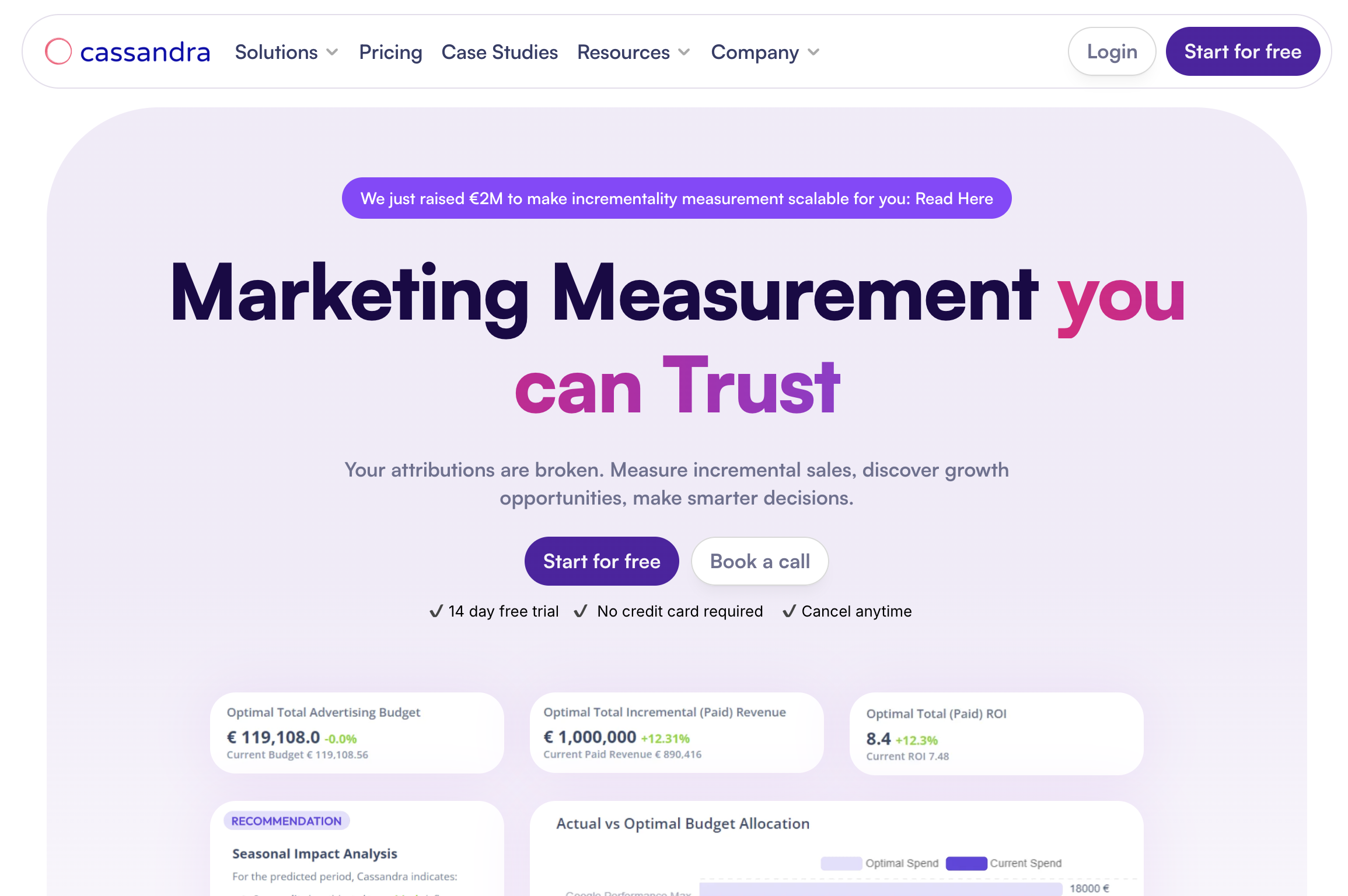
Cassandra is a self-service marketing measurement platform that combines AI-enhanced Marketing Mix Modeling (MMM) with incrementality testing to help brands and agencies optimize media spend and maximize ROI. The platform is designed to be user-friendly, allowing marketing teams to make data-driven decisions without the need for extensive technical expertise. Cassandra’s approach focuses on providing actionable insights through a combination of machine learning-based MMM and real-world incrementality experiments.
MMM Best For:
Cassandra is ideal for small-mid sized brands and agencies that are looking for a self-service solution to measure and optimize their marketing mix. It’s particularly suited for organizations that want to integrate incrementality testing into their MMM processes to validate and calibrate their models. However, for teams seeking a more integrated platform that combines MMM, causal attribution, and real-time optimization, Lifesight may offer a more comprehensive solution.
MMM Features:
- AI-Enhanced MMM: Utilizes machine learning algorithms to analyze historical marketing data and forecast future performance.
- Incrementality Testing: Incorporates geo-lift and other experimentation methods to assess the true impact of marketing activities.
- Budget Allocator: Provides recommendations for optimal budget allocation across channels to maximize ROI.
- No-Code Interface: Designed for non-technical users, allowing marketing teams to build and analyze models without coding.
- Frequent Model Refreshes: Offers regular updates to MMM models, ensuring that insights remain current and actionable.
Pros & Cons:
Pros:
- Combines MMM and incrementality testing in a user-friendly platform.
- Provides actionable insights for budget allocation and ROI optimization.
- Designed for non-technical users with a no-code interface.
Cons:
- While Cassandra integrates MTA, it’s worth noting that Multi-Touch Attribution is considered an outdated model in the current marketing landscape.
- Lacks the tight integration and automatic calibration of geo-lift and MMM seen in Lifesight.
- Does not offer a unified solution combining MMM insights with causal attribution and real-time and granular optimization, as seen in platforms like Lifesight.
Pricing:
Cassandra offers a flexible pricing model, allowing users to start for free and scale as needed. Specific pricing details are not publicly disclosed; interested parties are encouraged to contact Cassandra directly for customized pricing information based on their specific needs and scale.
08. Rockerbox
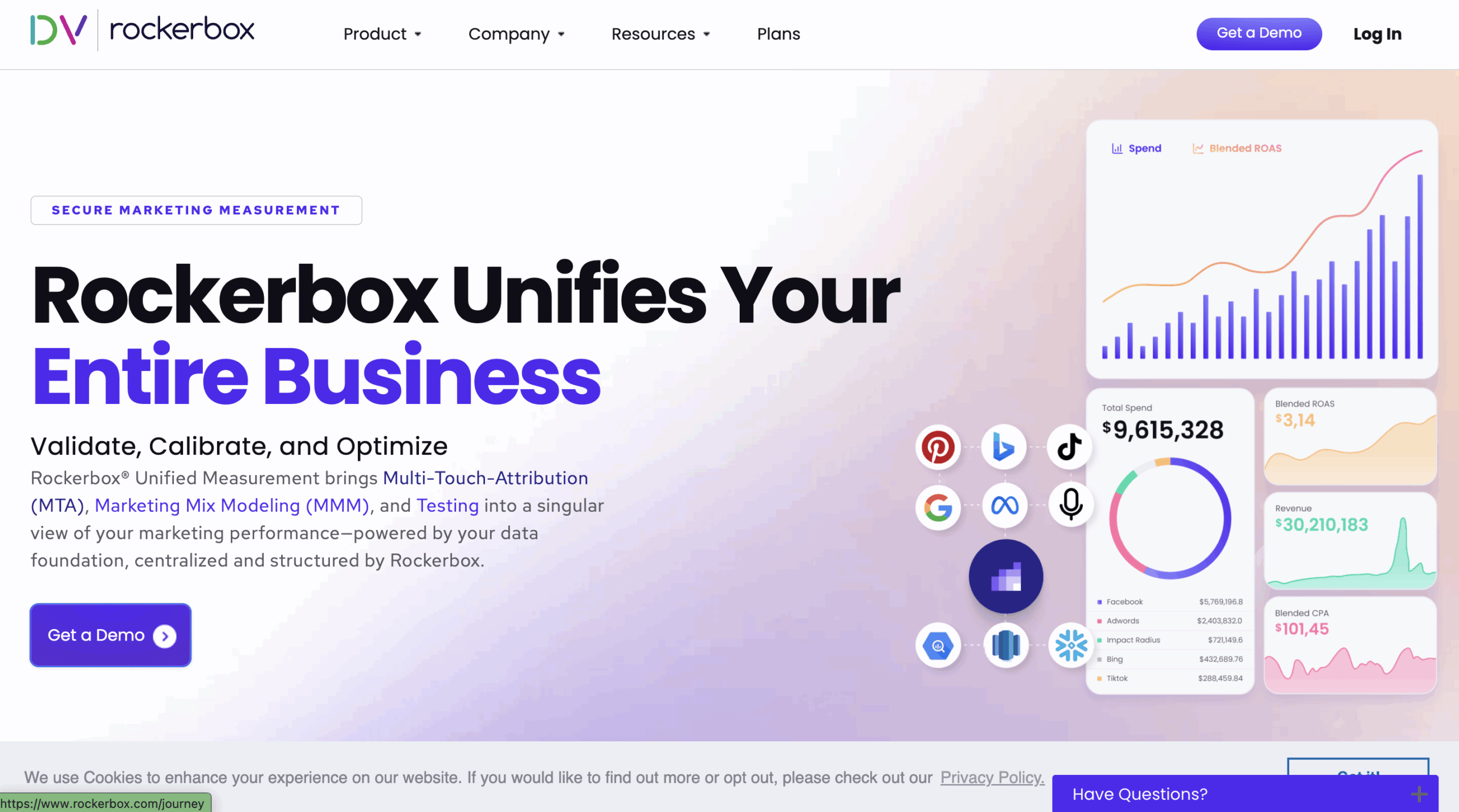
Rockerbox is a marketing measurement platform that combines Marketing Mix Modeling (MMM), Multi-Touch Attribution (MTA), and Incrementality Testing to help brands evaluate performance across various channels. While it aims to provide unified reporting and scenario planning, its reliance on MTA – a model increasingly viewed as outdated and privacy-vulnerable-limits its effectiveness in today’s data-restricted ecosystem. Notably, Rockerbox was recently acquired by DoubleVerify (DV), a move that raises potential concerns about the platform’s neutrality, especially when it comes to evaluating programmatic media performance, where DV has strong business interests.
MMM Best For:
Rockerbox is geared toward mid-sized brands with complex digital media portfolios looking for a unified dashboard across paid channels. However, those requiring a fully independent, unbiased platform with deeper causal attribution capabilities may find Lifesight’s privacy-first, seller-agnostic approach more reliable.
MMM Features:
- Unified MMM + MTA + incrementality toolkit
- Integrates with 100+ digital and offline data sources
- Forecasting tools for scenario planning and budget shifts
- Provides some support for geo-based testing and calibration
- Supports visualization of diminishing returns and ROAS trends
Pros & Cons:
Pros:
- Aggregates large volumes of media data into one place
- Offers MMM modeling and incrementality support together
- Enables marketing scenario testing and forecasting
Cons:
- Uses MTA, which is considered outdated in privacy-first ecosystems
- Post-acquisition by DV may introduce bias in evaluating DV-aligned inventory like programmatic ads
- Lacks native causal attribution and deep MMM calibration compared to Lifesight
Pricing:
Rockerbox follows a custom pricing model, typically targeting annual contracts in the $35K – $75K range depending on client scale and data needs. Pricing transparency is limited, and customers must go through a sales process to receive quotes.
09. Prescient AI
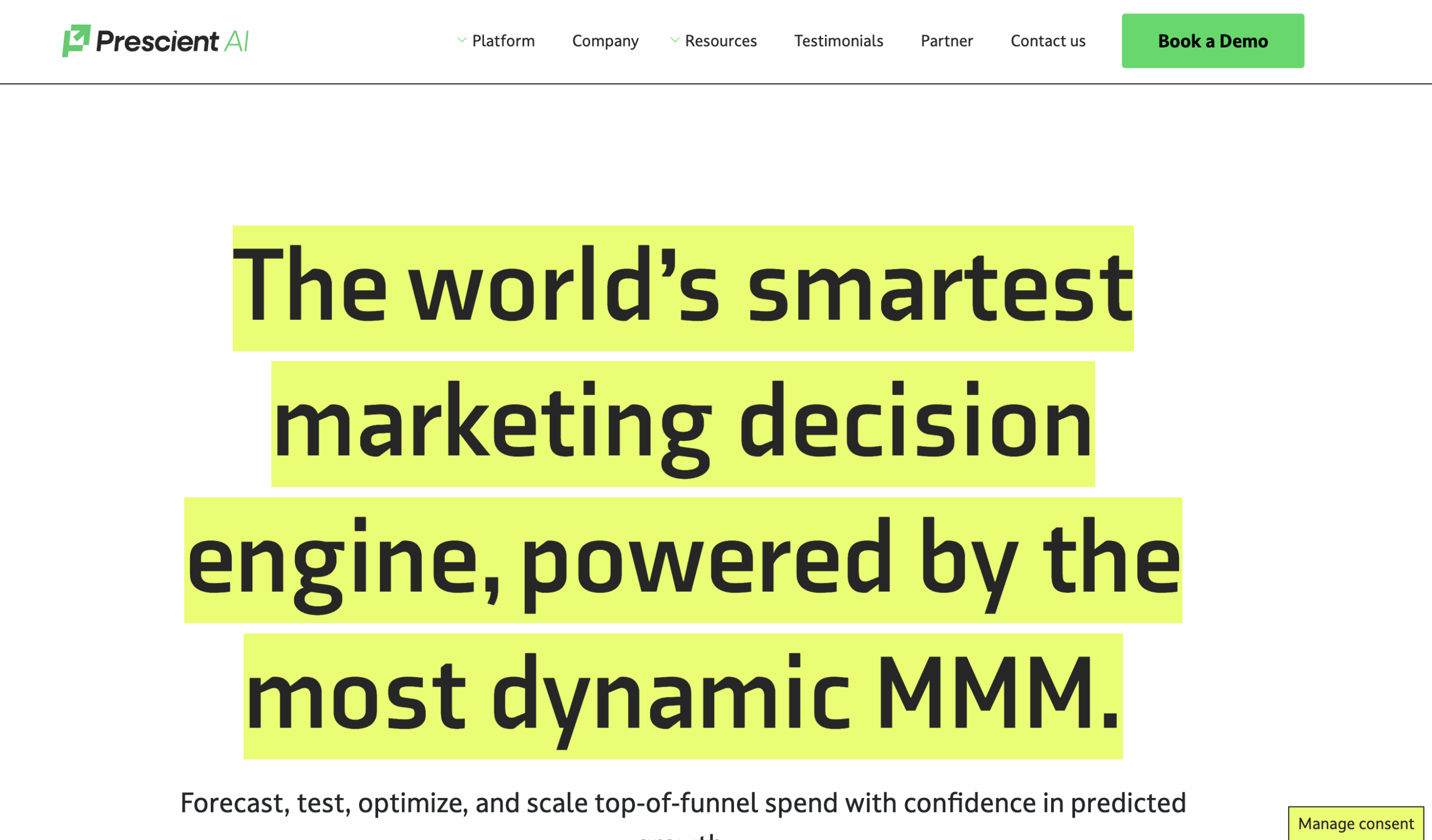
Prescientai Marketing mix modeling
Prescient AI is a modern marketing mix modeling (MMM) platform designed to help brands optimize their media spend by providing actionable insights through advanced machine learning and statistical analysis. The platform emphasizes transparency and speed, offering daily model refreshes and rapid onboarding to deliver insights in as little as 48 hours. Prescient AI’s approach focuses on providing a comprehensive view of marketing performance across channels, including the impact of halo effects and saturation points.
MMM Best For:
Prescient AI is well-suited for direct-to-consumer (DTC) brands and e-commerce businesses seeking a fast, transparent, and privacy-compliant MMM solution. Its emphasis on rapid insights and ease of use makes it ideal for marketing teams that require quick decision-making capabilities. However, for organizations looking for a more integrated platform that combines MMM with causal attribution and real-time optimization, Lifesight may offer a more comprehensive solution.
MMM Features:
- Daily Model Refreshes: Provides up-to-date insights by refreshing models daily, allowing marketers to make timely decisions.
- Halo Effect Attribution: Measures the indirect impact of marketing activities, such as increased organic search or direct traffic resulting from paid campaigns.
- Saturation Curve Analysis: Identifies diminishing returns on marketing spend, helping to optimize budget allocation.
- Marketing Mix Optimizer: Recommends budget reallocations across channels and campaigns to maximize ROI.
- Rapid Onboarding: Offers a click-to-connect setup that integrates with various marketing platforms in approximately 15 minutes.
Pros & Cons:
Pros:
- Fast onboarding and insights delivery.
- Transparent modeling approach with daily updates.
- Comprehensive analysis of both direct and indirect marketing effects.
Cons:
- May lack the depth of causal attribution and real-time optimization found in platforms like Lifesight.
- Focuses primarily on MMM without integrating other measurement methodologies.
Pricing:
Prescient AI does not publicly disclose its pricing structure. Organizations interested in the platform are encouraged to contact Prescient AI directly to obtain customized pricing information based on their specific needs and scale.
10. Fospha
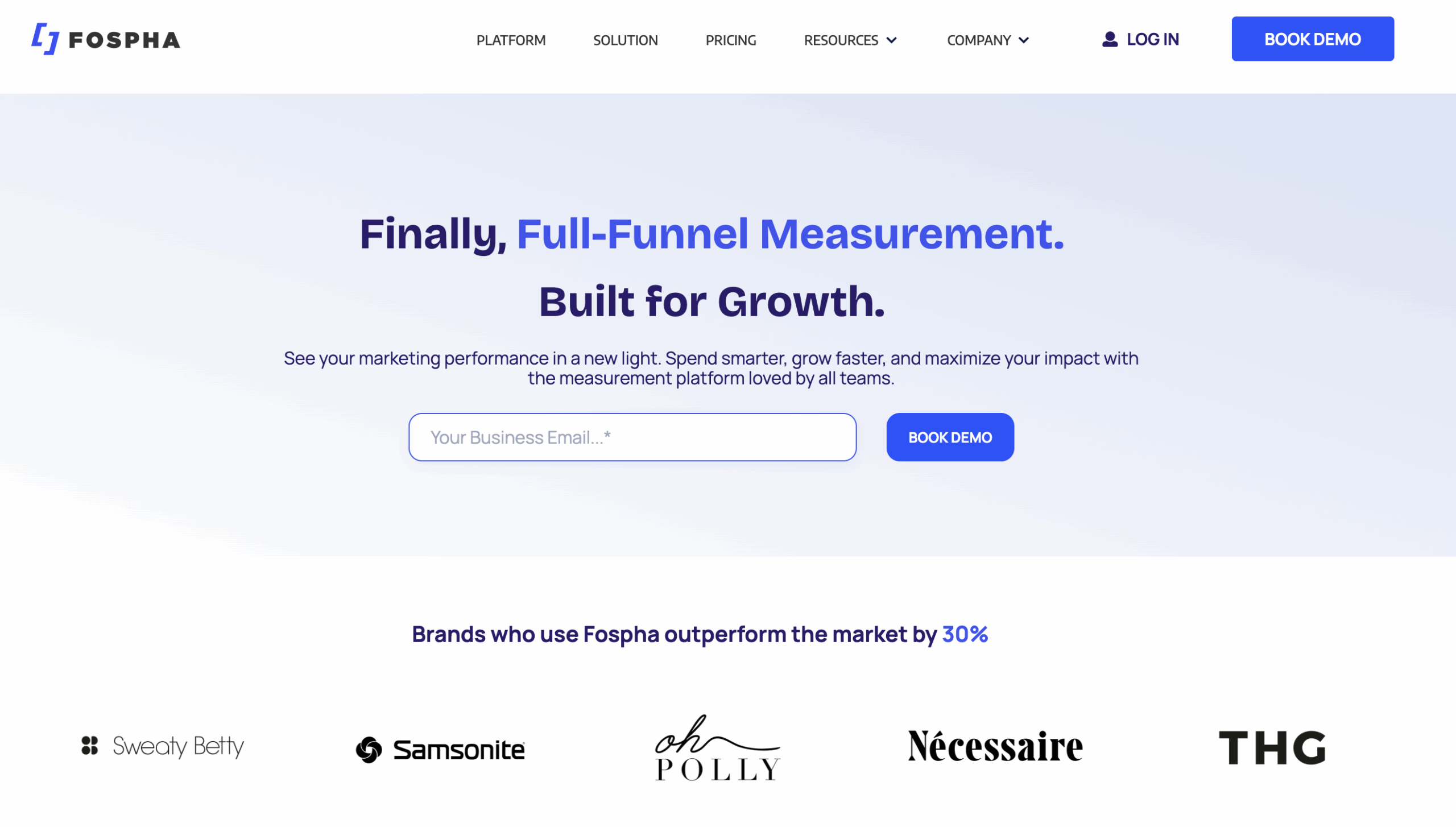
Fospha is a marketing measurement platform that combines machine learning-based attribution with daily Marketing Mix Modeling (MMM) to provide a comprehensive view of marketing performance. Designed for e-commerce and direct-to-consumer (DTC) brands, Fospha aims to restore visibility lost due to privacy changes by offering full-funnel measurement and forecasting capabilities. The platform emphasizes privacy compliance and rapid onboarding, enabling brands to make data-driven decisions without relying on third-party cookies or user-level tracking.
MMM Best For:
Fospha is well-suited for e-commerce and DTC brands seeking a privacy-compliant, full-funnel measurement solution that combines the granularity of attribution with the predictive power of MMM. Its daily model refreshes and rapid onboarding make it ideal for marketing teams that require timely insights to optimize their strategies. However, for organizations looking for a more integrated platform that combines MMM with causal attribution and real-time optimization, Lifesight may offer a more comprehensive solution.
MMM Features:
- Unified ML Attribution and Daily MMM: Combines machine learning-based attribution with daily MMM to provide a comprehensive view of marketing performance.
- Full-Funnel Forecasting: Offers predictive marketing spend forecasting to reveal optimal budget allocation for maximum returns.
- Privacy-First Measurement: Built to comply with global privacy standards, including GDPR, CCPA, and iOS14+, without relying on third-party cookies or user-level tracking.
- Rapid Onboarding: Provides a click-to-connect setup that integrates with various marketing platforms in approximately 15 minutes.
- Halo Effect Analysis: Measures the indirect impact of marketing activities, such as increased organic search or direct traffic resulting from paid campaigns.
Pros & Cons:
Pros:
- Combines attribution and MMM in a single platform for comprehensive measurement.
- Provides daily model refreshes for up-to-date insights.
- Emphasizes privacy compliance and rapid onboarding.
Cons:
- While Fospha integrates MTA, it’s worth noting that Multi-Touch Attribution is considered an outdated model in the current marketing landscape.
- Lacks the tight integration and automatic calibration of geo-lift and MMM seen in Lifesight.
- Does not offer a unified solution combining MMM with causal attribution and real-time optimization, as seen in platforms like Lifesight.
Pricing:
Fospha offers a flexible pricing model, allowing users to start for free and scale as needed. Specific pricing details are not publicly disclosed; interested parties are encouraged to contact Fospha directly for customized pricing information based on their specific needs and scale.
How to Choose the Best Marketing Mix Modeling (MMM) Software for my Business?
Choosing the right MMM platform is a strategic decision that can significantly impact your marketing efficiency and budget effectiveness. Here’s a step-by-step guide to help you navigate the selection process:
1. Understand Your Business Needs
Begin by identifying your primary marketing goals. Are you optimizing for growth, profitability, or channel efficiency? Consider the scale of your operations, the diversity of your marketing channels, and the frequency at which you make budget decisions. For instance, ecommerce brands with dynamic spends need different capabilities than traditional retailers focused on quarterly planning.
2. Evaluate Data Compatibility and Integration
Your MMM tool should integrate seamlessly with your existing data stack. Assess whether the platform can ingest data from your CRM, ad platforms, offline channels, and other sources. Ensure it can handle various formats and granularities – weekly, daily, or even hourly – based on your operational cadence.
3. Assess Modeling Methodology & Transparency
Look into how the software builds its models. Does it use frequentist or Bayesian approaches? Are the assumptions transparent? Avoid black-box solutions – choose a tool that explains how insights are derived and allows you to audit model inputs and logic.
4. Scenario Planning & Optimization Tools
A good MMM platform should go beyond measurement. Look for built-in scenario planners and budget optimizers that let you test “what-if” scenarios and simulate outcomes across media plans. This empowers strategic forecasting and agile spend reallocation.
5. Frequency of Model Updates
Timeliness matters. Check how often the MMM models are refreshed- daily, weekly, or monthly. More frequent updates provide fresher insights, especially important for fast-moving campaigns or industries with seasonality.
6. AI & Automation Capabilities
Automation reduces manual overhead and improves scalability. Platforms leveraging AI can streamline model building, automate calibration with experiment results, and surface insights proactively. This is essential for lean teams or those scaling across regions and products.
7. Customization & Support
Every business is different. Evaluate whether the software allows customization in terms of KPIs, model configuration, or reporting formats. Also, assess the quality of onboarding, training, and support – critical for successful adoption and ongoing use.
8. Cost & ROI
Finally, consider the total cost of ownership relative to the value it provides. Look for a solution that aligns with your budget but also promises measurable ROI – whether through saved media dollars, more efficient planning, or better forecasting accuracy.
Why should one Business Choose Lifesight Marketing Mix Modeling (MMM) Software?
Lifesight stands out as a truly unified, modern, and actionable MMM platform. Here’s why Lifesight is the smart choice for businesses seeking reliable, ROI-driven marketing analytics:
1. Unified Causal Measurement Stack
Lifesight is one of the few platforms that seamlessly integrates MMM, incrementality testing, and attribution into a single causal framework. This eliminates the guesswork from performance analysis and ensures consistency across all measurement layers.
2. Built-in Incrementality Calibration
While many platforms claim to support experiments, Lifesight actually ingests geo-lift and split test results to calibrate its MMM models in real time – providing more accurate, causally valid recommendations.
3. Forecasting You Can Take to the Board
With proprietary ensemble models, Lifesight delivers profit and revenue forecasts with ±5 – 10% accuracy. This level of predictability gives CMOs and CFOs the confidence to plan budgets that hold up under scrutiny.
4. Actionable Insights, Not Just Reports
Beyond reporting, Lifesight recommends exact optimization moves – what to cut, hold, or scale – and even enables direct push to platforms like Google and Meta. It bridges the gap between insights and action.
5. Privacy-First & Independent
Lifesight is fully cookie-free and seller-agnostic, with no ties to media platforms. You get unbiased insights backed by aggregate data models that comply with all major privacy standards.
6. Built for Speed & Scale
With a 7-day audit and first optimizations ready by day 30, Lifesight delivers value fast. The platform scales easily with your organization, whether you’re running regional campaigns or global media strategies.
7. Trusted by Marketing & Finance
By aligning marketing, finance, and agencies on one set of causal KPIs, Lifesight fosters internal trust and decision-making agility – helping businesses move from reactive reporting to strategic marketing intelligence
FAQ
1. What is Marketing Mix Modeling (MMM)?
Marketing Mix Modeling (MMM) is a statistical analysis technique used to measure the impact of various marketing activities – such as TV, digital ads, pricing, promotions, and seasonality – on business outcomes like sales or conversions. It uses historical data to estimate the contribution of each channel and guide future budget decisions, all without relying on user-level tracking.
2. What are the benefits of using Marketing Mix Modeling software?
MMM software enables marketers to make data-driven decisions by quantifying the true impact of each marketing channel. Key benefits include:
- Holistic, cross-channel measurement (online + offline)
- Forecasting ROI and revenue under different spend scenarios
- Identifying diminishing returns and media saturation
- Privacy compliance through aggregated, non-personal data
- Support for strategic and tactical budget optimization
3. Which is the best MMM software for mid to large size businesses?
For mid to large enterprises managing complex, multi-channel campaigns, Lifesight is a standout solution. It combines always-on MMM with incrementality testing and causal attribution in one platform. With advanced automation, strategic forecasting, and the ability to push recommendations directly into ad platforms, Lifesight helps scale insights across marketing, finance, and operations – without needing a heavy analytics stack.
4. What’s the difference between open-source and commercial MMM tools?
Open-source MMM tools (e.g., Robyn, LightweightMMM) offer flexibility and customization but often require deep statistical and engineering expertise. Commercial MMM platforms like Lifesight provide fully-managed, scalable solutions with built-in calibration, forecasting, and support – ideal for businesses seeking speed, accuracy, and ease of use without heavy data science lift.
5. How much does Marketing Mix Modeling software cost?
MMM software pricing varies based on company size, data volume, and required features. Entry-level platforms may offer plans starting around $2,000-$3,000/month, while advanced tools with full support, experimentation integration, and optimization may range from $30,000 to $100,000 annually. Platforms like Lifesight offer customized pricing aligned to ROI outcomes and media complexity.
6. Can I use MMM software without a data science team?
Yes. Modern MMM tools like Lifesight are designed for marketers, not statisticians. They offer intuitive dashboards, automated modeling, and guided onboarding – allowing non-technical teams to confidently run analyses, interpret insights, and act on recommendations without in-house data science resources.
7. How frequently should I run Marketing Mix Modeling analyses?
MMM analyses should be refreshed regularly to stay accurate and reflective of current market dynamics. Most businesses benefit from monthly or quarterly refreshes, while fast-paced industries (e.g., ecommerce) may need weekly updates. Some platforms, like Lifesight, support always-on MMM with continuous data ingestion and calibration.
8. Is MMM software compatible with Google Analytics 4, Meta Ads, and offline data?
Yes. Leading MMM platforms are built to ingest data from a wide range of sources, including GA4, Meta Ads, YouTube, TV, OOH, CRM, and even promotional calendars. Tools like Lifesight are designed to unify digital, offline, and contextual data into a cohesive modeling framework that reflects the full marketing picture.
You may also like
Essential resources for your success
